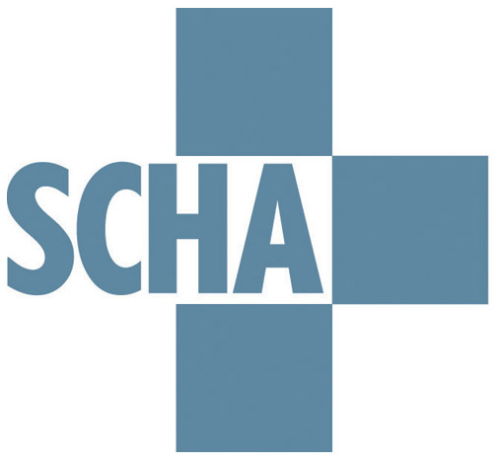In early April, KCG Clinical Advisor Dr. Peter Zwerner joined Senior Consultant Kingsley Mooney for a conversation on telehealth advancements amid COVID-19 [read or watch that conversation here]. Now, as hospitals and health systems begin to plan for reopening, we are once again joined by Dr. Zwerner to discuss how the ambulatory space is progressing.
Dr. Zwerner is a Cardiologist and the Chief Medical Officer of the Medical University of South Carolina [MUSC] physician practice, as well as the Co-Chief Medical Officer of MUSC Integrated Health System. He is a member of the Executive Leadership Team of MUSC Health and has held various leadership positions within the system. Dr. Zwerner joined KCG’s Clinical Advisory Board earlier this year.
Read or watch the conversation below to hear how MUSC is reopening their ambulatory space – learn how their telehealth platforms are evolving, how they are addressing patient safety concerns, and Dr. Zwerner’s thoughts on the future ambulatory delivery model.
Want to learn more about the questions and considerations that come with reopening in a post-COVID world? Click here to read our series, Returning to ‘Normal’ After COVID-19,
Conversation has been edited for length and clarity
Kingsley: Hi Dr. Zwerner! Thank you so much for speaking with me today, it is nice to see you again.
Dr. Zwerner: Hi Kingsley! Good to see you also.
Kingsley: So now that we are starting to see hospitals and health systems begin to return to ‘normal’ operations, I just wanted to check in with you to see how things were progressing in the ambulatory space. Last time we spoke, we discussed this rapid transformation of the telehealth platforms. How did that pan out and what was the impact on ambulatory’s ability to meet patient’s needs during this time?
Dr. Zwerner: It has been very interesting to witness the roll out, which has been dramatic and rapid and very successful. We are up to nearly 100% of the volumes we were pre-COVID, which is remarkable. That is a combination of both in-person visits as well as all the telehealth platforms, mostly video visits.
That being said, we’re trying to adapt to what that new normal looks like from an operational standpoint: How do we staff, working on roles given all the different specialties, trying to understand the workflow, trying to understand what our space utilization needs are in this new environment. We had closed nearly 40% of our ambulatory space during the initial COVID due to the decreased volumes. Now, as of next week we will probably be back to near 100% as we weave our providers back into those outreach clinics that we had consolidated.
Doing that is no small task in the new order, because we very sensitive to our patient safety and our staff safety. That involves social distancing, and we must have new ways to keep patients apart. We cannot have our old crowded waiting rooms with everyone reading three-year-old Parade magazines side-by-side. So, we are doing novel things like having people stay in their car, and then paging them when we are ready. We have spread out and removed furniture so, like many places and restaurants, people are far apart. We have a formal mask policy now for all our staff and patients.
We are also working on some very elaborate screening processes. That is through a screening at the time of scheduling their appointment, as well as when they register. We are also looking at some new technology that could automate that for us and push out screening to the patient before they come in, so they can fill out questionnaires and be triaged appropriately.
So, it is kind of exciting to be reinventing a whole new workflow, but it is not without some headaches for sure.
Kingsley: It sounds like you have a lot going on — a lot of great stuff. Figuring out what this new model looks like it is no easy feat. How are you making those decisions, understanding that some services can still be provided via virtual platforms, and some really need to be in person. And how are you bringing together all those stakeholder groups to make those decisions moving forward?
Dr. Zwerner: Yes, it is a challenge trying to find the right balance, and it varies from provider to provider, specialty to specialty, location to location. We are working in each area trying to map out what those platforms look like, and there are really three focuses that could take place. There are providers that may see all in-person visits, either due to their specialty needs or for other reasons. There are providers that will continue to see, if not all, almost entirely telehealth. Then there will be providers that stagger telehealth among in-person visits, which has a lot of advantages in terms of decreasing the volume in the waiting room and provides some efficiency.
What we find is a patient that is at home, having a cup of coffee and reading the newspaper, doesn’t really care if you see him in nine or nine twenty-five or ten to ten. They have not driven, they are not aggravated, they are not going anywhere, and so there is a tremendous amount of flexibility. In my clinic if I have an in-person no-show, which used to be a bit inefficient before, now I can call up my next telehealth and almost always they are more than happy to talk a little early. It provides flexibility, which is going to be critical going forward.
Kingsley: I think there is such an opportunity to shift our thinking of how we have traditionally delivered ambulatory care. To your point, there are opportunities for greater efficiencies – but with that,there might need to be some different staffing models, resource needs, etc., so it’s interesting to see how each organization is really addressing this challenge head-on and making the changes for this future model of how we’re going to be delivering and experiencing ambulatory care.
As you are working through this, are there any lessons learned, any predictions for what the future may hold?
Dr. Zwerner: Well again, I think we must be flexible. The other thing I am trying to emphasize is this could wax and wane, and so we may have more or less telehealth during periods going forward in the fall. We cannot build ironclad situations; we must have modular furniture that can be moved. We must have mindsets that can be moved.
We are also going to have to use more and more technology and automation in the process, in terms of patient notification and many other aspects of the workflow, so that those automated functions can be changed and switch very easily across thousands of platforms overnight, rather than the calling on the telephone and mailing things and all that.
Flexibility is the key going forward for sure. We are not done. We have not finished morphing.
Kingsley: Well I think that is the exciting part about this time –things are going to continue to evolve.
I thank you so much for the quick update, and we look forward to keeping in touch with you as we continue to see these changes across the healthcare industry.
Dr. Zwerner: And I am sure the next time we talk it will be a whole new landscape to discuss. Thanks for checking in, and hopefully I will talk to you soon!
Kingsley: Thank you Dr. Zwerner!







